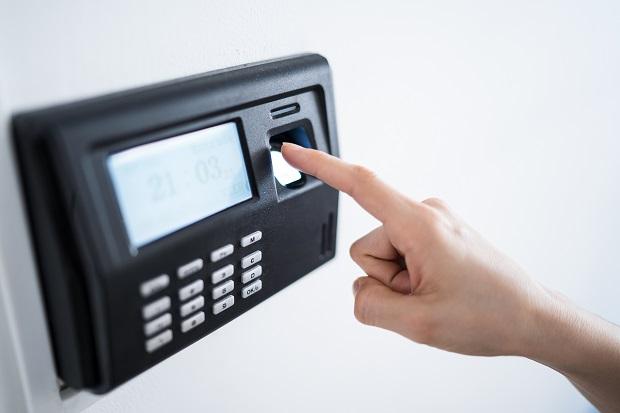The employees are the biggest asset of any company, and the employers know this better than anybody. Thus, managing them correctly can make or break your organization’s productivity and bottom line.
 However, one critical aspect of employee management you need to focus on is attendance. And this is where clocking in machines proves valuable. This article shares the basics of clocking in machines, the available types, and how they can benefit your business.
However, one critical aspect of employee management you need to focus on is attendance. And this is where clocking in machines proves valuable. This article shares the basics of clocking in machines, the available types, and how they can benefit your business.
 Clocking In Machines: What Are They?
Clocking In Machines: What Are They?
A clocking in machine is also known as a clocking system or an employee time clock. It’s a system where employees clock in and out of your premises, recording their attendance.
At the most basic level, systems like Egress Systems clocking in machines allows you to see when an employee doesn’t show up for work. It can also help you identify who entered and left your business premises, had their lunch a bit longer than expected, or left earlier than usual.
Types Of Clocking In Machines
When shopping for time clocks, you’ll have various options available. Here are some of them:
- Punch Card
This is probably the oldest type of clocking machine that still exists in some workplaces. With this machine, workers are given a time card to be inserted into the device upon arrival and before leaving. The machine indicates the exact time the time card is inserted into it.
- Proximity Readers
Proximity time clocks remain popular in most companies. They’re clocking-in machines that use radio frequency identification (RFID) to identify employees. This technology is typically embedded into an employee’s ID card. When an employee approaches the clocking in machine, the RFID tag is read and instantly records their attendance.
- Biometric Time Clocks
A biometric time clock uses biometric data such as facial recognition, fingerprints, or palm prints to confirm a person’s identity and record attendance. Since biometric data is unique to each employee, it’s a fool proof solution against buddy punching.
- Web-Based And Mobile Time Clock
Suitable for those working remotely, a web-based or mobile time clock allows employees to record their attendance by logging in through a web browser or a mobile app. Employees don’t have to be within your business premises to record time in and out.
4 Benefits Of Using A Clocking In Machine
Below are several advantages of using a time clock machine in your workplace:
- Time Tracking
The primary benefit of clocking in machines is tracking the working hours. For employers, it removes the necessity of monitoring arrivals and departures and the period of work and rests throughout the day. For employees, using clocking in machines mean they don’t have to track their hours and wages, allowing them to focus more on their work.
- Ensures Payroll Accuracy
Clocking in machines can help track the hours an employee works. Hence, employers and employees can stay confident in payroll accuracy. In particular, more sophisticated and advanced types of clocking machines can ensure that wage payments are neither under nor over the amount owed.
- Cost-Efficient And Time-Saving
By streamlining employee attendance and time-tracking, you can spend less time on administrative tasks, such as attendance logging and payroll computation. Most advanced time clocks can be paired with comprehensive software solutions to automate the computation process.
Time clocks can also reduce the chances of time theft or the buddy punching system. Buddy punching happens when an employee clocks in and out on behalf of another. In addition, time clocks can prevent employees from forgetting their lunch breaks, leaving the office early, or asking their co-workers to clock in on their behalf.
An effective clocking-in machine records any time spent in and out of the office. Therefore, you can calculate the right amount of compensation, saving you from potential errors in computing wages.
- Provides Transparency And Fairness
With clocking in machines, you can automatically track employee attendance and get an unbiased record of employee working patterns. As such, you can objectively assess how each employee is working. This allows you to address habitual tardiness or underperformers while rewarding the punctual ones or high performers.
Takeaway
A clocking in machine is a gatekeeper between your payroll system and employees. Without it, you may spend significant time ensuring that you’re paying employees correctly based on their working hours. Your options include a punch card, proximity reader, biometric time clock, and web-based time tracker.
Whether it’s your first time shopping for time clocks or want to replace the old ones in your office, this guide has provided you with better insights into the world of clocking in machines.




Comments are closed.